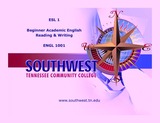
- Author:
- Janet Rosenthal
- Linda Patterson
- Rachel Mixson
- Margie Dernaika
- Chris Hastings
- Jessica Miller
- Date Added:
- 12/15/2021

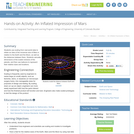
Students use scaling from real-world data to obtain an idea of the immense size of Mars in relation to the Earth and the Moon, as well as the distances between them. Students calculate dimensions of the scaled versions of the planets, and then use balloons to represent their relative sizes and locations.
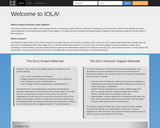
The Inquiry-Oriented Linear Algebra (IOLA) project focuses on developing student materials composed of challenging and coherent task sequences that facilitate an inquiry-oriented approach to the teaching and learning of linear algebra. The project has also developed instructional support materials to help instructors implement the IOLA tasks in their classrooms.
How to cite IOLA materials: Wawro, M., Zandieh, M., Rasmussen, C., & Andrews-Larson, C. (2013). Inquiry oriented linear algebra: Course materials. Available at http://iola.math.vt.edu. This work is licensed under a Creative Commons Attribution-NonCommercial-ShareAlike 4.0 International License.
This material is based upon work supported by the National Science Foundation under grant numbers DUE-1245673/1245796/1246083. Any opinions, findings, and conclusions or recommendations expressed in this material are those of the author(s) and do not necessarily reflect the views of the National Science Foundation.
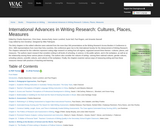
The thirty chapters in this edited collection were selected from the more than 500 presentations at the Writing Research Across Borders II Conference in 2011. With representatives from more than forty countries, this conference gave rise to the International Society for the Advancement of Writing Research. The chapters selected for this collection represent cutting edge research on writing from all regions, organized around three themes—cultures, places, and measures. The authors report research that considers writing in all levels of schooling, in science, in the public sphere, and in the workplace, as well as at the relationship among these various places of writing. The authors also consider the cultures of writing—among them national cultures, gender cultures, schooling cultures, scientific cultures, and cultures of the workplace. Finally, the chapters examine various ways of measuring writing and how these measures interact with practices of teaching and learning.Edited by Charles Bazerman, Chris Dean, Jessica Early, Karen Lunsford, Suzie Null, Paul Rogers, and Amanda Stansell.
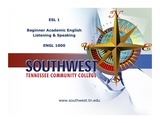
This is a three week lesson covering Present Tense and Present Progressive Tense, using the tenses at a library and at the doctor's office.
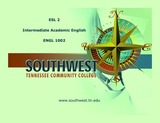
Reading, writing, speaking, and listening activities will focus on health care and community and college libraries. Students will review modals and use them to give advice.
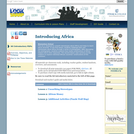
Introducing Africa is comprised of two lessons and is designed to raise studentsĚ_Ě_´ awareness about stereotypes of Africa; teach them information about the history, geography, economics and cultures of Africa; and to give them an appreciation for the diversity of the African continent. This kit will teach students to identify important details, make logical inferences, and draw informed conclusions from visual documents including photographs and money. The lesson was designed for third grade but can be used with older students.
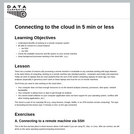
Data Carpentry lesson to learn how to work with Amazon AWS cloud computing and how to transfer data between your local computer and cloud resources. The cloud is a fancy name for the huge network of computers that host your favorite websites, stream movies, and shop online, but you can also harness all of that computing power for running analyses that would take days, weeks or even years on your local computer. In this lesson, you’ll learn about renting cloud services that fit your analytic needs, and how to interact with one of those services (AWS) via the command line.
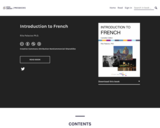
Word Count: 9862
(Note: This resource's metadata has been created automatically by reformatting and/or combining the information that the author initially provided as part of a bulk import process.)
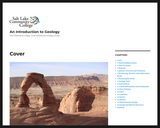
This text is provided to you as an Open Educational Resource which you access online. It is designed to give you a comprehensive introduction to Geology at no or very nominal cost. It contains both written and graphic text material, intra-text links to other internal material which may aid in understanding topics and concepts, intra-text links to the appendices and glossary for tables and definitions of words, and extra-text links to videos and web material that clarifies and augments topics and concepts. Like any new or scientific subject, Geology has its own vocabulary for geological concepts. For you to converse effectively with this text and colleagues in this earth science course, you will use the language of geology, so comprehending these terms is important. Use the intra-text links to the Glossary and other related material freely to gain familiarity with this language.
Faculty who adopt this text for their course should contact the authors at edits@opengeology.org so that the authors can keep faculty users up to date of critical changes.
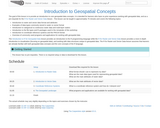
Data Carpentry lesson to understand data structures and common storage and transfer formats for spatial data. The goal of this lesson is to provide an introduction to core geospatial data concepts. It is intended for learners who have no prior experience working with geospatial data, and as a pre-requisite for the R for Raster and Vector Data lesson . This lesson can be taught in approximately 75 minutes and covers the following topics: Introduction to raster and vector data format and attributes Examples of data types commonly stored in raster vs vector format Introduction to categorical vs continuous raster data and multi-layer rasters Introduction to the file types and R packages used in the remainder of this workshop Introduction to coordinate reference systems and the PROJ4 format Overview of commonly used programs and applications for working with geospatial data The Introduction to R for Geospatial Data lesson provides an introduction to the R programming language while the R for Raster and Vector Data lesson provides a more in-depth introduction to visualization (focusing on geospatial data), and working with data structures unique to geospatial data. The R for Raster and Vector Data lesson assumes that learners are already familiar with both geospatial data concepts and the core concepts of the R language.

This subject will be an intensive introduction to neuroanatomy, involving lectures, demonstrations, and hands-on laboratories, including a brain dissection. The course will not assume any prior knowledge of neuroanatomy, though some general knowledge of brain structures will be helpful.
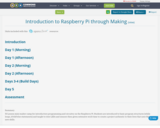
10 Lesson mini-maker camp for introductory programming and circuitry on the Raspberry Pi. Students are introduced to basic program structures (while loops, if/elif/else statements) and taught to wire LEDs and sensors then given extensive work time to create a project authentic to their lives that uses their new skills.
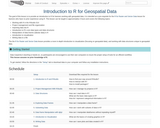
The goal of this lesson is to provide an introduction to R for learners working with geospatial data. It is intended as a pre-requisite for the R for Raster and Vector Data lesson for learners who have no prior experience using R. This lesson can be taught in approximately 4 hours and covers the following topics: Working with R in the RStudio GUI Project management and file organization Importing data into R Introduction to R’s core data types and data structures Manipulation of data frames (tabular data) in R Introduction to visualization Writing data to a file The the R for Raster and Vector Data lesson provides a more in-depth introduction to visualization (focusing on geospatial data), and working with data structures unique to geospatial data.
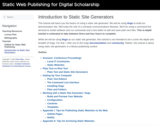
This tutorial will teach you the basics of using a static site generator. We will be using Hugo to build our demonstration site. We’ll play the role of a scholarly communications librarian. We’ll be using a command line terminal to install software and run commands and a text editor to edit and save plain text files. This in-depth tutorial is estimated to take between three and four hours to complete.
While we will be using Hugo as our static site generator, this tutorial is not intended to be a cover the depth and breadth of Hugo. For that, I refer you to the Hugo documentation and community. Rather, this tutorial is about using static site generators in a library-publishing context.

This course provides a substantive overview of U.S. politics and an introduction to the discipline of political science. It surveys the institutional foundations of U.S. politics as well as the activities of political elites, organizations, and ordinary citizens. It explores the application of general political science concepts and analytic frameworks to specific episodes and phenomena in U.S. politics.
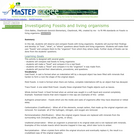
In this lab, students will observe and compare fossils with living organisms.
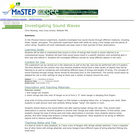
This activity is an experiment on how sound is energy and travels in waves. Students will investigate sound using different objects in the room.
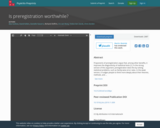
Proponents of preregistration argue that, among other benefits, it improves the diagnosticity of statistical tests. In the strong version of this argument, preregistration does this by solving statistical problems, such as family-wise error rates. In the weak version, it nudges people to think more deeply about their theories, methods, and analyses. We argue against both: the diagnosticity of statistical tests depend entirely on how well statistical models map onto underlying theories, and so improving statistical techniques does little to improve theories when the mapping is weak. There is also little reason to expect that preregistration will spontaneously help researchers to develop better theories (and, hence, better methods and analyses).
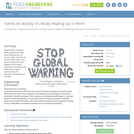
Student teams model the Earth's greenhouse effect using modeling clay, ice chunks, water, aluminum pie tins and plastic wrap. They observe and record what happens in this closed environment and discuss the implications of global warming theory for engineers, themselves and the Earth.